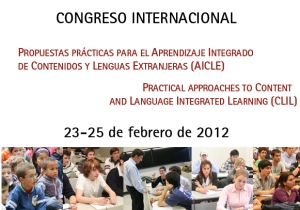
One of the core advantages in CLIL methodology which is commonly mentioned is the fact that this approach sheds light on the intimate relationship between language and content. Learning a specific subject in a foreign language raises questions about how to scaffold language in order to efficiently gain access to the new knowledge. If students do not feel confident with the language structures related to the subject, they will probably fail in acquiring it and move on.
This connection always operates when facing and trying to grasp new content, also when we strive to acquire it by means of our mother language. Therefore a certain linguistic scaffold or reflection shouldn’t just be applicable when learning a subject by means of a foreign language, but also in regular classes taught in the mother language.
Subject teachers, no matter their speciality, tend to presuppose their students are aware of and master the linguistic requirements related to the subject, or they just ignore it and therefore don’t take it into account when planning their syllabuses. This might lead some of our students to a lack of understanding and consequently of motivation towards the subject.
A way to improve this situation would be to foster a closer collaboration between language and subject departments. They could work together to identify the linguistic requirements of their subjects and think of strategies to make their students aware of them.










